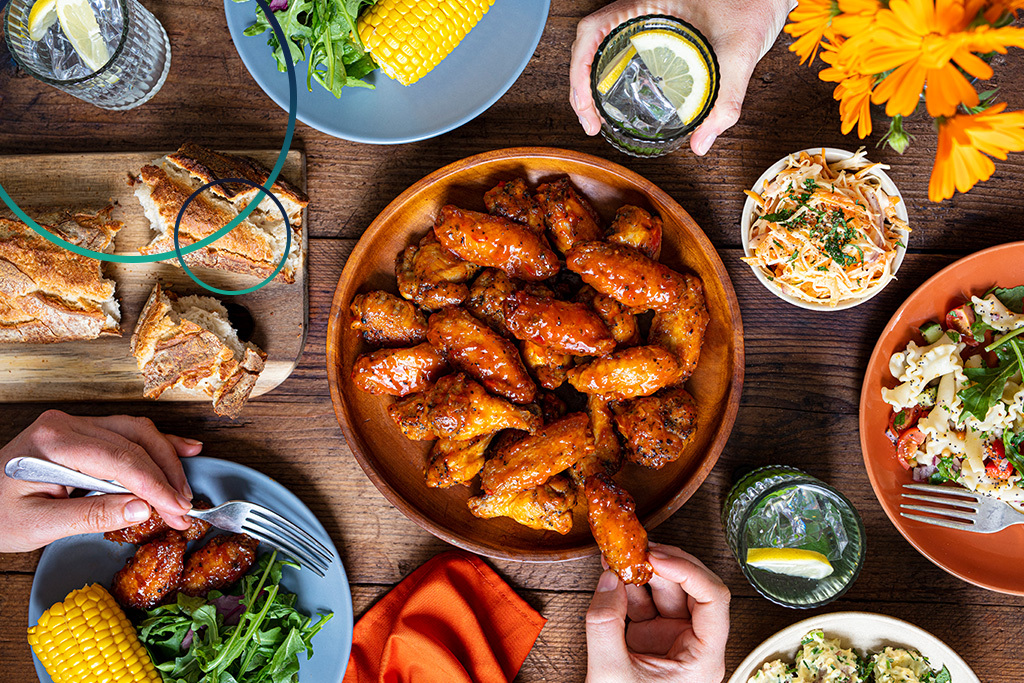Unveiling TikTok Advertising Secrets
Explore the latest trends and insights in TikTok advertising.
Say Cheese: Capturing Delicious Moments with Your Camera
Discover tips and tricks to snap mouthwatering food photos that make your followers drool. Capture unforgettable moments with your camera!
5 Tips for Perfect Food Photography: Elevate Your Culinary Shots
Food photography is an art that combines creativity with technique. To elevate your culinary shots, start by focusing on the lighting. Natural light is your best friend—if possible, set up near a window to benefit from soft, diffused sunlight. Avoid using harsh flash, as it can create unflattering shadows and reflections. Additionally, consider the time of day; early morning or late afternoon light provides a warm, inviting glow that enhances the colors of your dishes.
Next, pay attention to composition. Use the rule of thirds to create a balanced frame by imagining your image divided into nine equal parts and placing your subject along these lines. Experiment with different angles: shooting from above can show the details of your dish's ingredients, while a low angle can highlight the height and layers of a stacked meal. Lastly, don’t forget to style your food; a simple garnish can elevate the dish and make it more appealing to the viewer's eye.

The Best Lighting Techniques to Make Your Dishes Shine
When it comes to food photography, lighting techniques are crucial in showcasing your dishes at their best. Natural light is often the most coveted option, as it highlights the vibrant colors and textures of your culinary creations. Position your dishes near a window during the golden hour—shortly after sunrise or before sunset—to capture soft, diffused light that enhances the appetizing visual appeal. For consistent results, consider using reflectors made of white foam board or even aluminum foil to bounce light back onto your plates, illuminating shadowy areas and adding depth to your images.
If natural light isn’t available, you can experiment with artificial lighting to achieve stunning results. Use a combination of softboxes and LED lights to create a professional studio effect at home. To avoid harsh shadows, position your lights at an angle and consider filtering them with diffusion fabrics to mimic the gentle qualities of natural light. Remember, the way you arrange your lighting can significantly impact the final presentation of your dishes, so don’t hesitate to test different setups until you find the perfect balance that makes your food truly shine.
How to Style Food for the Camera: Tricks from the Pros
Styling food for the camera can transform a simple dish into a feast for the eyes, making it more appealing to potential viewers and readers. One of the most effective tricks from the pros is to focus on the color palette of the ingredients. Using a mix of vibrant colors can create visually striking images. Consider incorporating fresh herbs or colorful garnishes, which not only enhance the dish's appearance but also add textural contrast. Additionally, using a variety of serving dishes can elevate your food styling; for instance, a rustic wooden board or elegant white china can complement different types of cuisine.
Lighting plays a crucial role in food photography, so ensure you take advantage of natural light whenever possible. Position your food near a window where soft, diffused light can enhance the textures and colors. If you’re shooting indoors and natural light is low, consider using a reflector to bounce light onto your dish, boosting its vibrancy. Experimenting with angles is another professional technique; a 45-degree angle works well for most plated dishes, while overhead shots are ideal for flat-lay presentations like brunch spreads. Remember, styling is about creating an inviting atmosphere that draws the viewer in, so take your time and enjoy the process!